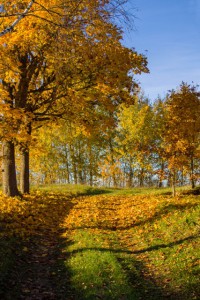Friday, 8.11.2013
Technical data. The approximate length of the road:
176 km Naro Muru-Nairobi
+
136 km to the turn to Amboseli lake at Emali (but that’s for another day)
+
363 km to Mombasa
TOTAL approx. 675 km
Although this route is doable with a car that does not require special technical strength for rattling over potholes and off-road, it took us a long time, that is we started at 6:30am and arrived in Mombasa around 10:00pm. Mostly to blame are the lorries raging on the road, which we must overtake, and in this country it happens extremely impressive – past various sides of the cars. Because, it turns out, once you have an off-road car, why not overtake along a ditch? Although, dear reader, be assured, it can be done with any car. Don’t believe? Come to Kenya!
Parts of the day and details for stitching the events together:
• There is a craving for tomatoes. Thus we are buying them. With confidence in the face we are going to conquer the lowest prices among the tomato mountains on the roadside. We let ourselves away for 100 shillings in exchange for a good sized bucket full of tempting tomatoes. Part of the day we are over the Moon of the awaited moment only to conclude during the lunch that Kenyans are by far unable to match the tomato growing skill of Latvians. That’s because the tomatoes are wearily sweet rather than delicious as it should have been for Kenyan sun cured knobs. Our driver Karioki gets one more reason to visit Latvia while listening to our stories – to taste normal, delicious tomatoes.
• There is even bigger craving for pineapple. Thus we are buying them. In the tangle of roads of Nairobi suburbs Karioki brings us to heaps of pineapple. The men products grabbed in hands encircle us to find out that Latvians are hagglers, and we buy two large pineapples for 150 shillings. They smell great. They taste even better.
• In a small village not far from Nairobi we stop at a souvenir stall CurioShop. Damn expensive. Later, Agnese will take us to a craftsmen village near Mombasa, where everything is much, much, much cheaper. But that’s another day.
• In the Tsavo village of Voi the driver decides to change the oil. Meanwhile, we are behaving exactly as is required of us – bellies forward emptying a jug of cold beer. As always, a bottle of Tusker is 200 shillings. The attendant, like most of his colleagues in the country, works great, wonderful, brilliant. How can he be transported as a model to Latvia?
• Finally we realize (but actually Karioki advises) that pikipiki (motorcycles) who gather in flocks in many places, are in fact taxis.
• While approaching Mombasa, we are taking shots with baobabs along the roadside. Baobabs are standing, we are clicking.
• At sunset storm clouds are growing in the sky. Both dark blue-black and mud yellow, with the crepuscular rays and with a rainbow. Clouds are raining, we are clicking.
• When it darkens we arrive to a traffic super-jam into Mombasa. It turns out that Kenyans want to weigh every lorry that is departing from Mombasa, and so they also do it. Lorries lined up in tens of kilometers long lines, also are trying to drive on the opposite lane, so we have to take the vacant lane in the ditch. Our driver is trying to get back on the asphalt with a jump which skids and turns our car a lot. Further on we are driving wisely and are afraid.
• However, Mombasa suburbs cease to amaze. A heavy car traffic jam has developed, a tangle, which consists of five lanes in one direction, it swallows us, we get stuck. In resolving the situation the entire crowd living in the next few kilometers is involved. By knocks on the car roof and hood, we get informed in the system of a complex code, and we are driving forward, a little back, then more backwards, a little bit forward, to the side, and otherwise for about an hour.
• We have found our hotel “Josleejim”. It’s a pity the entertainment with cockroaches is absent, but there is a guard, who promises and promises and promises to bring mosquito nets, and finally arrives at midnight to wake us up and say that he does not have them.
• We fall asleep each with our own dream for the next day of entertainment in the city and on the beach. Life outside the window is in full swing throughout the night. It is always “cool” here.
